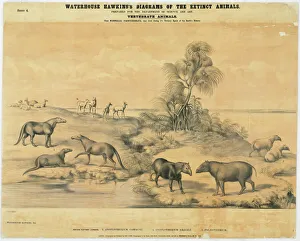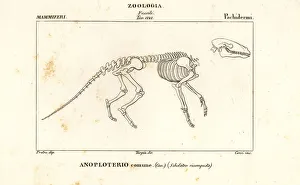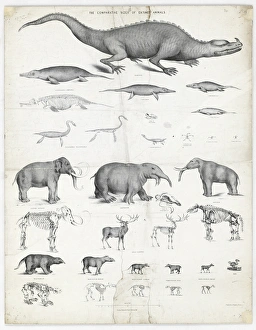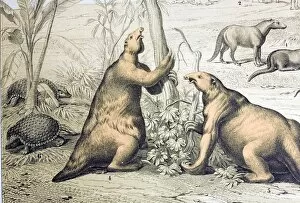Anoplotherium Collection
Anoplotherium, a fascinating creature from the past
All Professionally Made to Order for Quick Shipping
Anoplotherium, a fascinating creature from the past. This ancient mammal, belonging to the Anoplotherium commune and gracile species, roamed the lands during the Tertiary Period in Europe. It was part of a diverse group of animals that inhabited the basin of the Seine. When we compare its size to other extinct animals, such as Palaeotherium or even the giant ground sloth Megatherium, we can truly grasp its uniqueness. The fossil skeleton of an Anoplotherium commune gives us a glimpse into its anatomy and helps us understand how it moved and lived. Intriguing engravings like "Animaux fossiles du bassin de la Seine" or "European animals of the Tertiary Period" depict this extraordinary creature alongside other remarkable beings that once walked our Earth. A color lithograph from 1888 showcases various Tertiary mammals, including Anoplotherium. As we explore further into history through captivating illustrations like "Landscape in Tertiary era Europe" or pages from "The Pictorial Museum of Animated Nature, " we immerse ourselves in an ancient world where Anoplotherium thrived. Its distinct features are highlighted in these depictions - from its skeletal structure to its head resembling that of a Sumatra-Rhinoceros. These visual representations allow us to appreciate not only the physical characteristics but also imagine how it interacted with its environment. Anoplotherium holds a significant place among prehistoric creatures, leaving behind traces that continue to captivate scientists and enthusiasts alike. Its existence serves as a reminder of our planet's rich biodiversity throughout time and encourages us to delve deeper into understanding our natural history.













